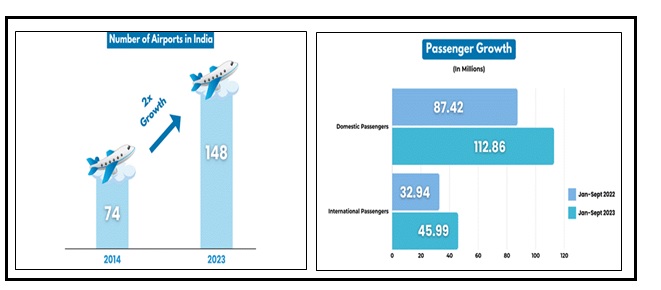7667766266
enquiry@shankarias.in
India has one of the fastest-growing aviation sectors, with very serious safety issues.
The International Air Transport Association (IATA) projects that India will become the world's 3rd largest civil aviation market by 2026.

India’s airport capacity is expected to handle 1 billion trips annually by 2023
|
Regional Connectivity Scheme (RCS) - UDAN (Ude Desh ka Aam Nagrik) |
|
|
International Civil Aviation Organization (ICAO) |
|